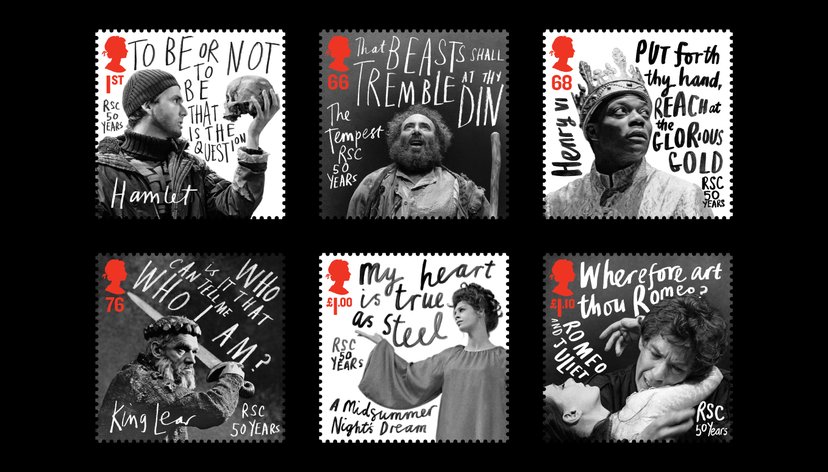
Key details
Date
- 8 July 2021
Author
- Lisa Pierre
Read time
- 6 minutes
Nick Foster (MA Design Products, 2001) is a designer, creative leader and futurist based in California. He is widely regarded as a pioneer in the emerging field of Futures Design, combining industrial, interaction and speculative design practices.
Key details
Date
- 8 July 2021
Author
- Lisa Pierre
Read time
- 6 minutes
“Our challenge as the creators of new things is in weighing up the balance between intentional positive impact and unseen, unintentional or unforeseeable negative impact. The work I’m most passionate about focuses on exploring these second and third order implications of design and technology, so that we can either address them, or be better prepared for them.”
Designer
Nick is known for developing strategy, communication and visualisation techniques for some of the world’s leading organisations, including Dyson, Sony, Nokia and Google. His career has been defined by the development of academic approaches to design and their successful integration into industrial and commercial practice.
Nick is currently the Head of Design at X (formerly known as Google X), where he leads a multi-disciplinary team of researchers and designers in developing world-changing, technology driven projects. Nick is also a founding partner at the Near Future Laboratory, working in the pioneering field of Design Fiction. These roles both focus on creating detailed depictions of the future to aid in present day reflection and decision making.
He was twice named the ‘Young Engineer for Britain’ by the British Engineering Council, in 2001 he received his Master’s from the Royal College of Art and in 2018 he became a Fellow of the Royal Society of Arts.
What would you say is an academic approach to design?
This is perhaps ‘biography shorthand’ for the type of design work which typically sits within academia and research – in my field this is exemplified by Critical Design and Speculative Design practices. There’s utility in maintaining this separation, of course, and it’s prudent to keep certain aspects of design unpolluted by the commercial world, but I feel that there’s huge benefit in incorporating these techniques into my work with large organisations, which I’ve been attempting to do over the last twenty years or so.
You recently gave a career talk to some students in which you said that graduating from the RCA offers an unfair advantage. What did you mean by this?
This was a little tongue-in-cheek, but like every joke there’s some truth to it. Whilst I was studying at the RCA there were times when I questioned whether I was making the right choice, whether the two years there was going to be useful, whether I should be working or studying somewhere else. In retrospect my time at the RCA was clearly one of the most important periods of my life, and has led to countless opportunities and connections over the last two decades. I included this point in my talk as a means to reassure any current students that the RCA is still immensely respected in the outside world – regardless of discipline – and the connections I made there still exert a strong force on my work today.
At X you create radical new technologies to solve some of the world’s hardest problems. Tell us about some of these?
X (mostly still referred to as Google X) is a wonderful place. Our role is to explore the world’s biggest challenges and pull-on nascent technologies as a means to address them. This can include using imaging, simulation and automation to remove driver error from our roads (via self-driving cars) or introducing robotics to our agriculture to ensure we can continue to feed our growing population (project Mineral). There’s no real limit to what we could explore, which keeps things interesting and engaging.

Moonshot thinking is about pursuing things that sound undoable, but if done, could redefine humanity. How has X pushed and nurtured this ideology?
The joy of X is that it’s a work in progress, and we’re constantly exploring and redefining what we do and how we do it. Tackling moonshots is in many ways antithetical to ‘normal’ ways of working, so it takes a lot of effort to unlearn what one has learnt from elsewhere. A willingness to push oneself to try things – even though the potential for failure is high – requires a certain confidence, most of which comes from the support and encouragement of others.
You describe yourself as a futurist. What current trends do you see forming part of our lives?
I do describe myself as a futurist, which is a lofty self-nomination for sure. That said, I’m not the kind of futurist who makes predictions – it’s a rarely useful and almost entirely fruitless activity. The one thing I will say is that we’re at a unique moment in history, where bedrock norms are being challenged and change is accelerating exponentially. This could be the dramatic changes in social justice, inclusivity and equity; the evolution and disparity of connectivity, machine intelligence and data access; or the pace layer inversions and disruptions brought about by climate change. Human beings (and the systems we have created) are ill equipped for the rate and scale of change we’re experiencing, so the next epoch represents a massive challenge to us all. We’ll need to be more co-operative, quicker to adapt and less dogmatic than ever before, which seems like a big ask.
In your opinion, what is one of the greatest designs?
I don’t tend to gravitate towards iconic statement pieces by figurehead designers, although I do admire the energy which goes into that kind of work. My general worldview is represented by my 2013 manifesto ‘The Future Mundane’, so I’m typically drawn to design interventions which become such a pervasive part of the fabric of our lives that they become invisible. For that reason, I’ll say toothpaste.

Are there any technological advances that you would say have not been good for humanity?
I think the real challenge would be to find something that has wholly been ‘good for humanity’. Every single designed thing has externalities, unexpected consequences, and undocumented impacts. Solving one thing typically introduces new problems, which the French cultural theorist Paul Virilio summarised in his lovely quote ‘when you invent the ship, you also invent the shipwreck’. Our challenge as the creators of new things is in weighing up the balance between intentional positive impact and unseen, unintentional or unforeseeable negative impact. The work I’m most passionate about focuses on exploring these second and third order implications of design and technology, so that we can either address them, or be better prepared for them.
When you are teaching, what approaches and insights do you highlight?
I think there’s a rising tide of responsibility in design. How one interprets ‘responsibility’ is subjective of course, but I think the era of design in a vacuum is over. In truth, the new generation has more to teach me in this regard than vice versa. More practically speaking, wherever possible I encourage designers to be instinctive, to make things and revel in uncertainty. In recent years certain organisations have pushed a formulaic, procedural approach to design which has led to a processional approach to creativity which many young designers find crippling. I prefer to learn by making things, experimenting and allowing the process to reveal itself, and I encourage students to do the same.
You say designers are concerned with the now or next. What comes first for you, the idea or how to make it reality?
To clarify, I think design projects typically fall into three buckets: now, next and future. The ‘now’ being the work we’re doing to get something finished, the ‘next’ being the one or two products after that, and the ‘future’ which are the longer range explorations beyond current product horizons. In my work (which typically falls in that third bucket) there’s clearly a bias towards idea over execution – we tend to focus on the concept, whilst remaining comfortable with a level of uncertainty around the execution. This can become a trap if the balance isn’t well monitored, resulting in futures projects which revel in the fantastical, wishful and escapist, becoming less useful in the process. The enduring challenge of Futures Design is in the careful management of this balance between vision and pragmatism.
You said ‘Every designer is a cultural voyeur — a perpetual sponge for inspiration and a running faucet for ideas. When we design, we draw on experiences from our private lives, from our travels and observations. Design is a lifestyle, the method acting of careers. Design doesn’t stop at 5pm.’ Are you always working?
Well, it’s a loose definition of ‘work’. The closing of a sketchbook, doesn’t mean that the thinking, observing, learning and discussing stops. Inputs exist everywhere, from a TV show to a thrift shop find, from a YouTube clip to a pub conversation, and these diverse sources can shape my thinking so fundamentally that they must be considered essential to the work. Encouraging people (especially students) to think of design as a lifestyle is important, as it engenders a way of being, of observing and engaging with the world in a designerly way. In time this becomes instinctive, and impossible to switch off.

Tell us about Design Fiction?
My partner at the Near Future Laboratory (Julian Bleecker) is credited with creating Design Fiction, which is a technique which uses the tools of design to help explore, provoke and stimulate debate about possible, probable or plausible futures. In the same way that we unpick the daily lives of historical humans through archaeology, Design Fiction aims to do the same in a projected manner, through the production of ephemeral, everyday items such as meal receipts, magazine adverts or product packaging. This helps develop more detailed, less fantastical perspectives on the future, and hopefully encourages organisations to approach the design of futures in a more grounded, pragmatic manner.
Your studio is full of skateboards, artworks and bikes. Are these things that you have designed or things that inspire you?
They’re not things I designed, but they are things I like to have around me. Like many designers I’m covetous and sentimental, I gain inspiration from a huge variety of sources, and as such my studio is as much an archive as a place to work. As a young kid my cultural landscape was dominated by skateboarding, graffiti and hip hop. Finding a way to move forward and express something whilst under significant constraints is at the core of that culture, and I enjoy being surrounded by this ephemera, as a reminder to do the same in my own work. There’s also a fair chance it’s just the manifestation of my mid-life crisis.

